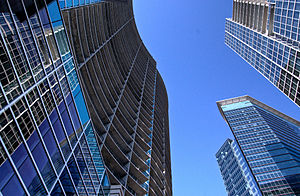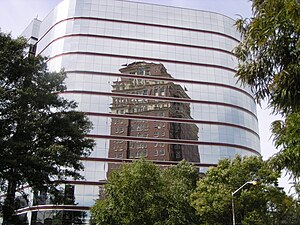

The architecture of Atlanta is marked by a confluence of classical, modernist, post-modernist, and contemporary architectural styles. Due to the Battle of Atlanta and the subsequent fire in 1864, the city's architecture retains almost no traces of its Antebellum past. Instead, Atlanta's status as a largely post-modern American city is reflected in its architecture, as the city has often been the earliest, if not the first, to showcase new architectural concepts.[1] However, Atlanta's embrace of modernism has translated into an ambivalence toward architectural preservation, resulting in the destruction of architectural masterpieces, including the Commercial-style Equitable Building (Atlanta's first skyscraper), the Beaux-Arts style Terminal Station, and the Classical Carnegie Library. The city's cultural icon, the Neo-Moorish Fox Theatre, would have met the same fate had it not been for a grassroots effort to save it in the mid-1970s.[2]
- ^ Mead, Nick Van (2018-10-23). "The lost city of Atlanta". The Guardian. ISSN 0261-3077. Retrieved 2023-07-12.
- ^ Gournay, Isabelle. AIA Guide to the Architecture of Atlanta. University of Georgia Press. ISBN 978-0820314501.
© MMXXIII Rich X Search. We shall prevail. All rights reserved. Rich X Search
